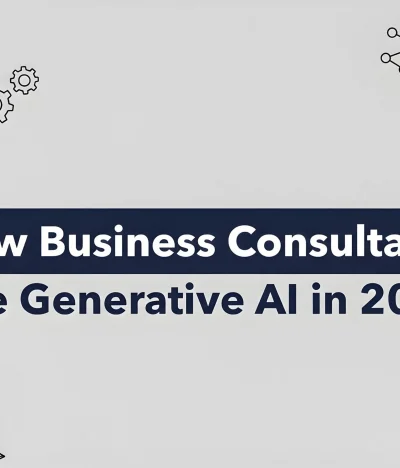Align Your Business Vision with Market Trends
Your business vision is the foundation of your company’s identity. It defines what you want to achieve and the impact you want to make in the world. A clear and compelling business vision guides your company’s decisions and inspires your team. It acts as a compass, providing direction and purpose, which is crucial for navigating the complexities of the business environment. Moreover, a well-articulated vision can unite your team, fostering a sense of shared purpose and motivation.
To align your business vision with market trends, start by revisiting and refining it to ensure it reflects your long-term goals. This process involves evaluating whether your vision resonates with current market realities and future possibilities. Consider how your vision interacts with emerging trends, such as technological advancements or shifts in consumer expectations. By doing so, you can ensure that your vision remains relevant and actionable, guiding your strategic decisions effectively.
Defining Your Business Goals
Business goals are the specific objectives that help you achieve your vision. These goals should be SMART: Specific, Measurable, Achievable, Relevant, and Time-bound. By setting clear goals, you provide your team with direction and motivation. They serve as benchmarks for success and help prioritize efforts across different departments. Moreover, clearly defined goals foster accountability, as team members understand their roles and responsibilities in achieving the overall vision.
Regularly reviewing and adjusting these goals ensures they remain aligned with both your vision and the changing market. It’s essential to consider how external factors might impact your objectives and be prepared to pivot when necessary. This flexibility allows your business to remain agile in the face of new challenges and opportunities, maintaining alignment with both your vision and market trends.
Analyzing Market Trends
To effectively align your business vision with market trends, it’s essential to stay informed about the latest developments in your industry. Regularly analyze market trends to identify opportunities and challenges that could impact your business. This involves not just passive observation but active engagement with industry reports, competitor analysis, and consumer feedback. By doing so, you can anticipate shifts and position your business to capitalize on new opportunities.
Understanding market trends also means recognizing patterns and changes over time. It’s about seeing beyond the immediate impacts and identifying long-term implications for your business. This foresight can be a significant competitive advantage, allowing you to innovate and adapt before others in your industry. Furthermore, it helps you to assess the sustainability of your strategies and refine them as needed to remain relevant and effective.
Identifying Key Trends
Start by researching and identifying key trends in your industry. These could include technological advancements, changes in consumer behavior, or shifts in regulatory environments. Understanding these trends allows you to anticipate changes and adjust your business strategy accordingly. It involves not only identifying what is happening but also understanding why these changes are occurring and how they might evolve.
Beyond the obvious trends, dig deeper to uncover underlying factors that might influence future developments. Look at adjacent industries, global economic indicators, and social movements that could indirectly affect your market. This comprehensive understanding enables you to craft strategies that are robust and adaptable, positioning your business to thrive in a dynamic environment.
Conducting a SWOT Analysis
A SWOT analysis (Strengths, Weaknesses, Opportunities, Threats) is a valuable tool for assessing your business’s current position in the market. By identifying your strengths and weaknesses, you can capitalize on opportunities and mitigate potential threats. This analysis is not a one-time exercise but should be an ongoing process, revisited as new information becomes available.
In addition to identifying internal factors, consider how external market trends influence your SWOT analysis. For instance, a technological advancement might be an opportunity for a strength or a threat if it exposes a weakness. By integrating market trends into your SWOT analysis, you ensure that your strategic planning is both comprehensive and forward-looking, equipping your business to respond effectively to changes.
Aligning Business Strategy with Market Trends
Once you’ve identified relevant market trends, the next step is to align your business strategy with these trends. This involves making strategic decisions that position your business for success. It requires a balance between maintaining your core competencies and being flexible enough to adapt to new market demands. Strategic alignment ensures that every aspect of your business, from operations to marketing, works in harmony towards achieving your vision.
Aligning your strategy might involve restructuring internal processes, investing in new technologies, or even redefining your target market. It’s about making informed choices that reflect both your business’s capabilities and the external environment. Moreover, alignment isn’t a one-time task but a continuous process of evaluation and adjustment, ensuring long-term resilience and growth.
Adapting Your Product or Service Offerings
To stay competitive, consider adapting your product or service offerings to meet changing market demands. This might involve introducing new features, expanding your product line, or targeting a different customer segment. By staying responsive to market trends, you can maintain your relevance and appeal to customers. It’s about evolving with the market, rather than reacting to it, ensuring that your offerings meet the current and future needs of your customers.
Moreover, adapting your offerings isn’t just about what you provide but also how you provide it. Consider changes in consumer expectations around delivery methods, customer service, or post-purchase support. By aligning your delivery and support mechanisms with market trends, you can enhance customer satisfaction and foster loyalty, creating a competitive advantage.
Enhancing Customer Engagement
Engaging with your customers is crucial for understanding their needs and preferences. Use surveys, social media, and customer feedback to gather insights into what your customers value. By aligning your business strategy with customer expectations, you can build strong relationships and drive customer loyalty. This ongoing dialogue with customers not only informs your current strategies but also helps identify future trends and opportunities.
In addition to traditional engagement methods, explore innovative ways to connect with your audience. This could involve leveraging emerging technologies like AI for personalized interactions or using data analytics to predict customer behavior. By staying ahead in customer engagement, you ensure that your strategies are not only aligned with current trends but also anticipate future shifts in consumer preferences.
Leveraging Technology
Technology plays a significant role in aligning your business vision with market trends. Embrace digital tools and platforms to enhance efficiency, improve customer experiences, and gain a competitive edge. Whether it’s implementing a new CRM system or utilizing data analytics, technology can help you stay ahead of the curve. It enables you to streamline operations, reduce costs, and deliver better value to your customers.
Beyond operational improvements, technology can also drive innovation in your product or service offerings. Consider how emerging technologies like IoT, AI, or blockchain could transform your industry and create new business models. By proactively leveraging technology, you position your business not only to respond to current trends but to shape future ones.
Conclusion
Aligning your business vision with market trends is essential for maintaining a competitive edge in today’s dynamic business environment. By understanding your vision, analyzing market trends, and adapting your strategy, you can position your business for success. Remember to continuously monitor your progress and be open to change, as this will help you stay ahead of the competition and achieve your business goals. With a clear vision and a strategic approach, your business can thrive in the ever-changing marketplace.
Ultimately, alignment requires a commitment to ongoing learning and adaptation. It’s about being proactive rather than reactive, constantly seeking ways to improve and innovate





